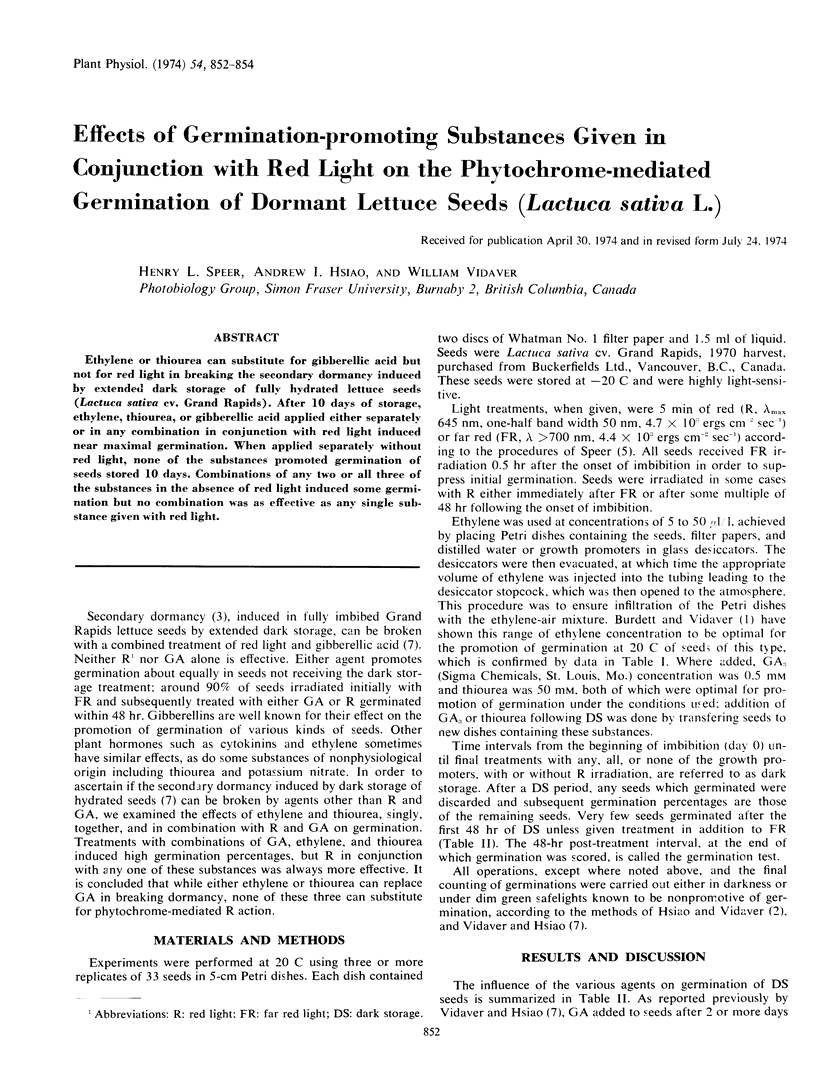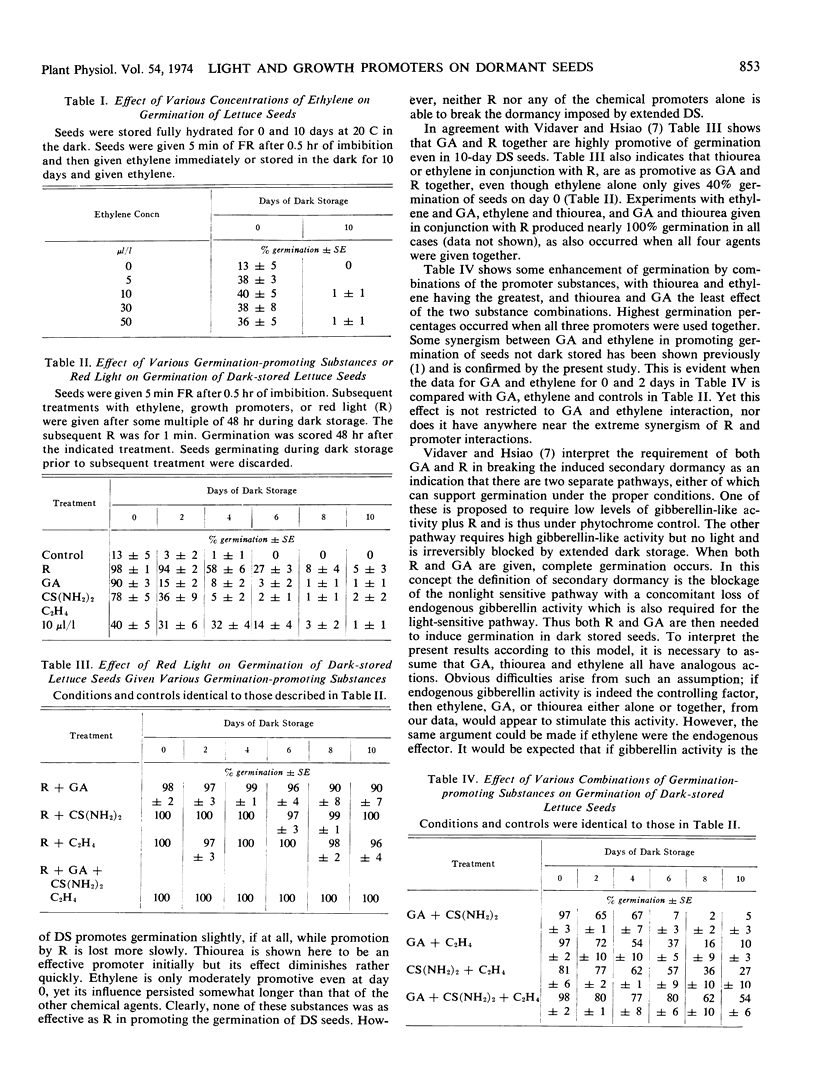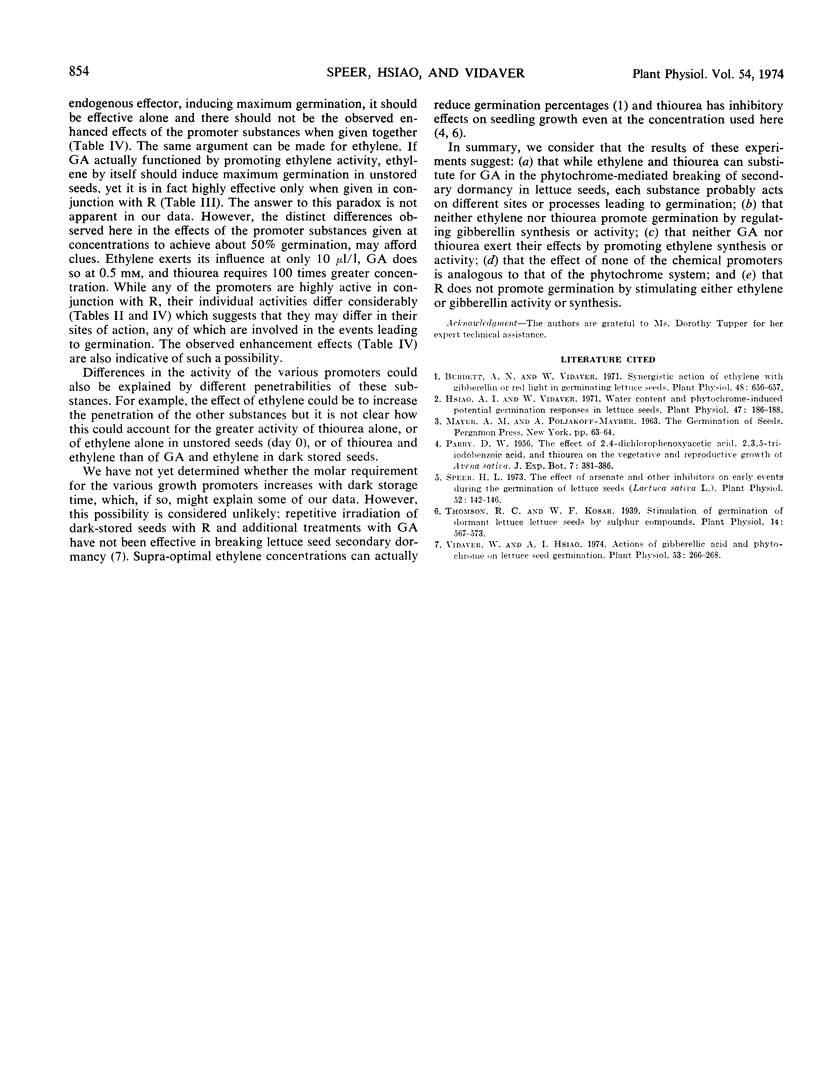Abstract
Ethylene or thiourea can substitute for gibberellic acid but not for red light in breaking the secondary dormancy induced by extended dark storage of fully hydrated lettuce seeds (Lactuca sativa cv. Grand Rapids). After 10 days of storage, ethylene, thiourea, or gibberellic acid applied either separately or in any combination in conjunction with red light induced near maximal germination. When applied separately without red light, none of the substances promoted germination of seeds stored 10 days. Combinations of any two or all three of the substances in the absence of red light induced some germination but no combination was as effective as any single substance given with red light.
Full text
PDF


Selected References
These references are in PubMed. This may not be the complete list of references from this article.
- Burdett A. N., Vidaver W. E. Synergistic action of ethylene with gibberellin or red light in germinating lettuce seeds. Plant Physiol. 1971 Nov;48(5):656–657. doi: 10.1104/pp.48.5.656. [DOI] [PMC free article] [PubMed] [Google Scholar]
- Hsiao A. I., Vidaver W. Water Content and Phytochrome-induced Potential Germination Responses in Lettuce Seeds. Plant Physiol. 1971 Feb;47(2):186–188. doi: 10.1104/pp.47.2.186. [DOI] [PMC free article] [PubMed] [Google Scholar]
- Thompson R. C., Kosar W. F. STIMULATION OF GERMINATION OF DORMANT LETTUCE SEED BY SULPHUR COMPOUNDS. Plant Physiol. 1939 Jul;14(3):567–573. doi: 10.1104/pp.14.3.567. [DOI] [PMC free article] [PubMed] [Google Scholar]
- Vidaver W., Hsiao A. I. Actions of gibberellic Acid and phytochrome on the germination of grand rapids lettuce seeds. Plant Physiol. 1974 Feb;53(2):266–268. doi: 10.1104/pp.53.2.266. [DOI] [PMC free article] [PubMed] [Google Scholar]


